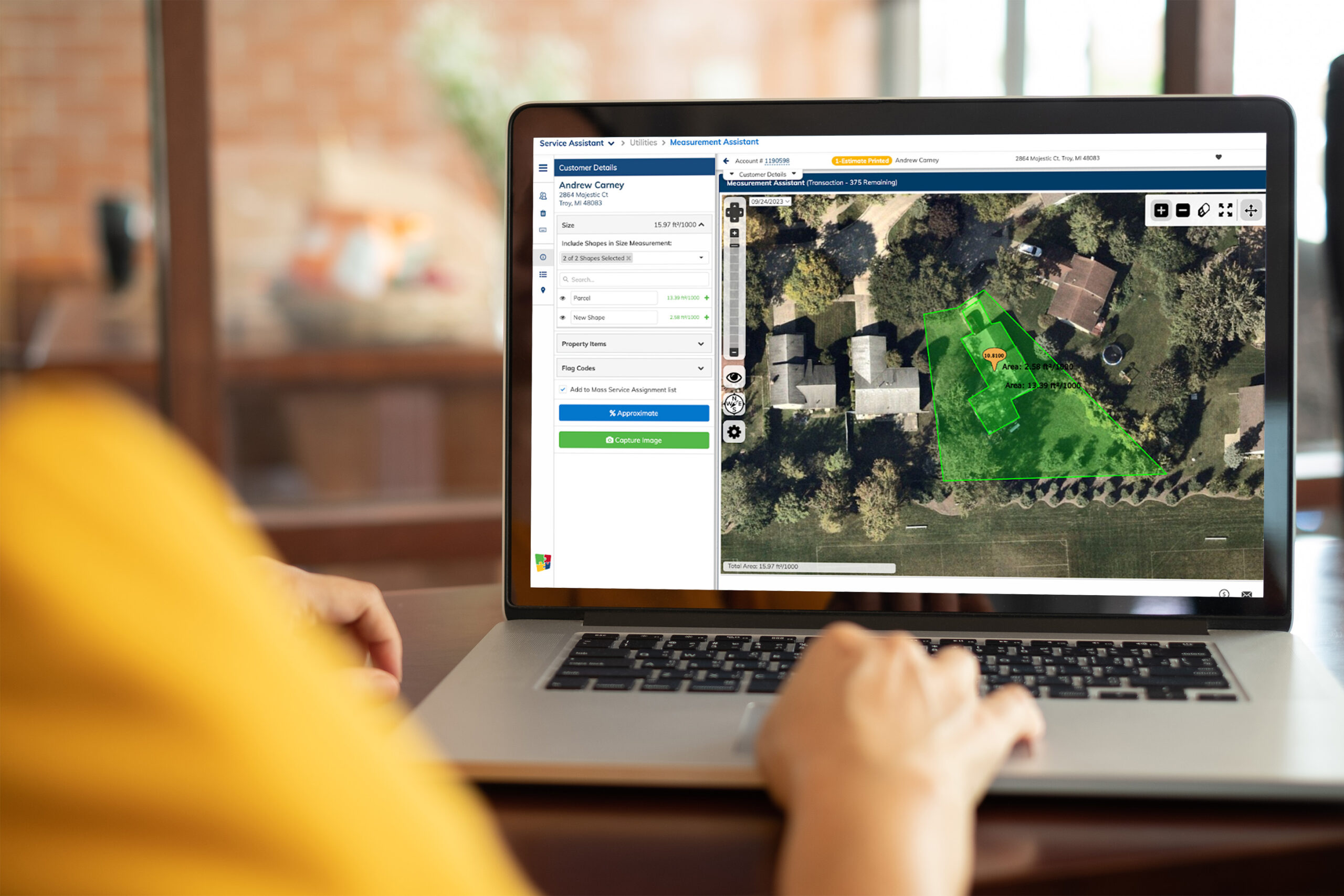6 Ways to Use AI & Automation to Scale Your Lawn Care Operation
Running a large lawn care operation means juggling hundreds of moving pieces every day. Between managing crews across multiple routes, keeping up with customer demands and maintaining quality standards, there’s always something demanding your attention. The companies that are pulling ahead are working more effectively by letting technology handle the routine tasks that eat up valuable time.
Here’s how the most successful lawn care companies are using automation and AI to stay competitive while their teams focus on what matters most: delivering great service and growing the business.
Smart Estimating That Works at Scale
When you’re handling dozens of estimates every week, sending estimators to every property becomes a bottleneck that slows everything down and drains labor hours, ultimately costing you money. Weather delays, no-shows and inaccessible properties can derail your entire estimating schedule.
Modern measurement tools solve this by using satellite imagery and AI-powered property analysis to generate accurate estimates without setting foot on the property. Using these tools, your estimators can measure lawns, calculate square footage and create detailed proposals from the office.
The best tools integrate directly with your CRM, so estimates automatically flow into your sales funnel with customer information, property details and pricing already populated. This eliminates the manual data entry that creates delays between estimate and proposal, enabling you to close on, and start servicing, new customers faster – a direct pipeline to capturing more revenue, quickly.
AI-Powered Lead Qualification
Not every website visitor is ready to buy, but determining who’s serious used to require a salesperson to call every lead. AI changes this by qualifying prospects before they ever talk to your team.
Modern chatbots do more than just collect contact information. They ask the right questions to understand property size, current service provider, budget and timeline. The top solutions will do more than this: They will also provide instant pricing for standard services while flagging high-value prospects for immediate follow-up.
As a result, your sales team can spend time talking to qualified leads instead of chasing down every form submission.
Autonomous Equipment That Actually Works
The robotic mower market has matured significantly; in fact, it’s poised to reach $8.7 billion globally by 2035. With major players like Husqvarna and Honda expanding their lines of robot mowers in recent years, this trend will only continue. (Source: marketbusinessinsights.com/robotic-lawn-mowers-market)
Today’s autonomous equipment can handle complex properties, navigate obstacles and operate reliably with minimal supervision. For large operations, this technology is becoming a competitive advantage. The most advanced systems map properties independently, adjust cutting patterns based on grass growth and can handle properties up to several acres.
Early adopters are using autonomous mowers for high-frequency accounts like commercial properties and premium residential clients. The equipment pays for itself through reduced labor costs while freeing up crew members for more complex tasks that require human expertise.

Marketing That Runs Itself
Effective marketing for large operations means staying in front of hundreds or thousands of customers with relevant messages at the right time. Doing this manually is impossible at scale.
Automated marketing systems use customer data to trigger personalized communications based on specific events: service reminders before scheduled visits, upsell opportunities after completing basic services, renewal campaigns for annual contracts and win-back messages for former customers.
The key is segmentation. Your commercial clients need different messaging than residential customers. Properties requiring fertilization services should receive different communications from maintenance-only accounts. With the ability to access and analyze your customer data, smart automation platforms can manage multiple customer segments simultaneously, ensuring everyone receives relevant content.
Dynamic Route Optimization
Managing routes for multiple crews across large service areas involves countless variables: traffic patterns, service time requirements, customer preferences, crew capabilities and many others. Manual route planning becomes increasingly difficult as your operation grows.
Smart routing solutions consider all these factors simultaneously, creating optimized routes that minimize drive time and build scalable route density while respecting customer time windows and crew assignments. By reducing fuel costs and windshield time while maximizing stops-per-technician, the best routing softwares directly impact your bottom-line profitability.
Advanced platforms also consider revenue optimization, not just efficiency. They can prioritize high-value services, group complementary services together and ensure your most skilled crews handle your most important accounts.
Intelligent Business Operations
Large lawn care companies generate enormous amounts of operational data: customer preferences, crew productivity, equipment usage and seasonal patterns. This information can drive better decision-making, but only if you can access and analyze it effectively.
Modern business intelligence tools designed for service companies automatically track key performance indicators: revenue per route, customer lifetime value, crew efficiency and service quality metrics. They identify trends that might not be obvious from daily operations, like which services have the highest profit margins or which customers are most likely to expand their service packages. And they put the most current, accurate data analyses at your fingertips in minutes, quickly giving you a 360-degree view of your entire operation.
These insights help you make strategic decisions about pricing, service offerings and resource allocation based on actual performance data rather than intuition.

The Strategic Advantage
The lawn care companies that will dominate the next decade are the ones implementing these technologies now. While competitors struggle with manual processes, automated operations can scale efficiently, maintain consistent quality and respond quickly to market opportunities.
The technology exists today to automate the routine tasks that consume your team’s time and attention. The question isn’t whether automation will transform the lawn care industry – it’s whether your company will lead the change or struggle to catch up.
Companies that embrace these tools report significant improvements in administrative efficiency, route optimization and customer response times. More importantly, they free up management bandwidth to focus on strategic growth instead of daily firefighting.
The most successful implementations start with one area – such as estimating or route optimization – then expand systematically over time. This approach allows teams to adapt to new processes and easily manage change, while demonstrating clear ROI before investing in additional automation.
Your operation already has the foundation for growth. The right technology can help you build on that foundation more efficiently than ever before.


